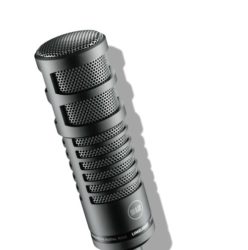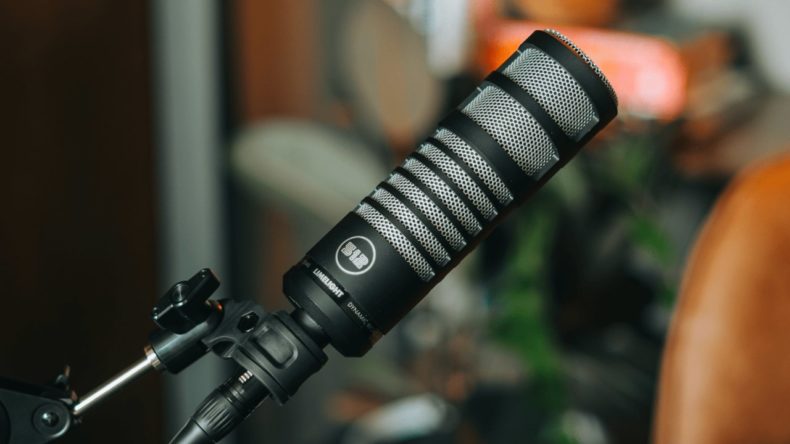While the name 512 Audio may not be familiar to you, most people who dabble in mics and sound systems – particularly in studio environments – may well know the name Warm Audio. They’ve been manufacturing studio-grade sound and recording tech for some years, and it’s their founder, Bryce Young, who heads 512. The 512 Audio Limelight microphone is designed with streamers, gamers and podcasters in mind. If, like me, you’ve been happy using plug and play USB mics (the Samsung G-Track Pro) and HyperX QuadCast have been my staple mics for years), you may not see the appeal of the Limelight. Using an XLR connection, it requires more than simply plugging in and positioning, but it also offers more options, too.

Out of the box, the Limelight looks impressive. Its clean design looks professional, durable, and stylish alongside any set up. It doesn’t come with its own stand or mount though, so I swapped it onto my standard boom arm right away. Not being particularly savvy with mics (a side effect of relying on plug and play for so long), I had to secure an audio interface to enable use of the Limelight.
Luckily, I know a guy who knows a guy, and I was able to secure an interface for the purposes of the review. If you’re interested, I was using the Focusrite Scarlett Solo, which will set you back about £90 (so cheers, Lee!). There are cheaper alternatives out there though, so shop around.
The trade off for the extra expense is simply better audio quality. While standard USB mics can do a sterling job and will often serve the needs of podcasters and streamers without fancy bells and whistles, an XLR mic allows a much greater level of audio tweaking and fine-tuning. You don’t need to play around with complicated software either, and can do everything physically to get the sound you want.
If like me you’re prone to audio pop when talking into a mic, you’ll be pleased to know that the Limelight’s integrated filter does a solid job of reducing it. It’s also pretty good at hushing background noise, which is ideal if you’re in a busy house or urban environment. It features a hyper-cardioid polar pattern, which isn’t selectable as with some USB mics. It won’t dampen excess noise completely, and you’ll need to be fairly close to make the most of it.
It’s difficult to fully recommend switching to an XLR mic from USB if you’re a fairly casual streamer or broadcaster. The extra control over sound quality is great, but not necessary for every set up. Retailing at around £150, and taking into account that you’ll also need the right cables, boom, and audio interface, it’s also an expensive upgrade from much more affordable alternatives.
The quality, though, is undeniable. I wouldn’t look to swap it permanently with my standard mics (for me, they’re just more convenient and less complicated), but anyone looking to really up their audio game and go for studio-level quality could do a lot worse than investing in the 512 Audio Limelight.





